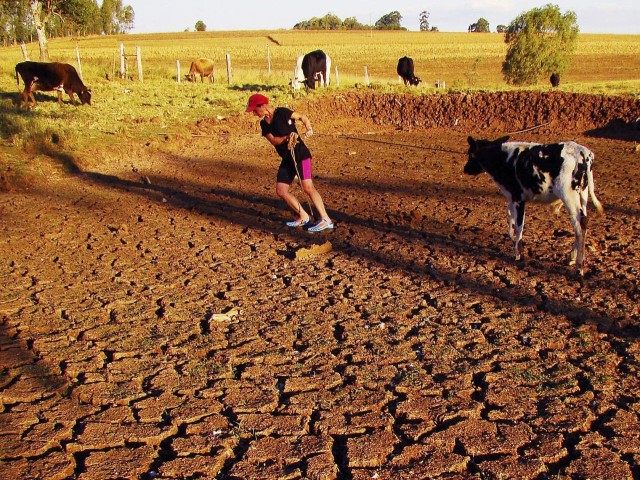Overheated tropical waters in the Pacific are set to flip to a cooling phase that will say goodbye to the docile little boy called “El Niño” and prepare for his rambunctious little sister, “La Niña.”
Breitbart News reported in October that the planet was experiencing the most extreme El Niño conditions ever recorded in modern times, according to the National Oceanic and Atmospheric Administration Climate Prediction Center. With the super-heated surface temperatures in sections of the equatorial Pacific Ocean rising to an all-time-high of 10.8 degrees Fahrenheit above normal, the agency predicted a strong El Niño weather pattern would last through winter and then slowly weaken in late spring.
The cyclical Pacific warming trend interrupted and partially reversed prevailing westerly trade winds that normally blow from South America to Polynesia, turn up toward Japan, and then curl along Alaska and the West Coast.
El Niño conditions in 2015 led to an exceptional season of Pacific tropical windstorms and flooding in Europe, according to the “Global Catastrophe Review – 2015” published by Guy Carpenter & Co. insurance risk consultants.
Carpenter estimates that 2015 global weather losses plummeted to just $30.5 billion versus 10-year and 5-year moving averages of around $49.7 billion and $62.6 billion, respectively. Last year’s insurance payouts also marked the lowest total catastrophic weather claims since the 2009 El Niño, and far below the record 2011 La Niña insurance losses of $126 billion.
The eastern two-thirds of the United States experienced a very mild 2015 winter. New Yorkers on Christmas Day were wearing shorts and headed to the beach in 72-degree weather, while Los Angeles surfers headed to local malls to buy sweaters in 59-degree weather.
Breitbart News reported that the 2015 El Niño caused a wide swath of drought-induced crop damage across Central America and the Caribbean, destroying roughly half the corn and a significant amount of the bean harvests. As a result, prices for basic food staples rose by 40 percent in what the U.N. Food and Agriculture Organization called an El Niño humanitarian crisis that left 1 million Guatemalans suffering from food deprivation.
By contrast, the 2015 Atlantic hurricane season that ended on November 30 saw a substantially below-average number of “named” storms slamming the U.S. coasts. The biggest storm damage came from Tropical Storm Bill, a torrential rain-producing storm that made landfall in Texas on June 16 with top winds of 60 mph. Although Bill is blamed for four deaths, it only caused about $17.9 million in property damages.
Carl Torgersen of the California Department of Water Resources told CBS News that an El Niño “March Miracle” recently brought enough heavy West Coast rainfall to fill most Northern California’s lakes and reservoirs — such as Lake Oroville, which “is up 216 feet since December and 97 feet in the month of March alone.”
California still has a water storage deficit of 13 trillion gallons, but this year’s El Niño has produced the deepest snowpack in five years. With the El Niño rainy season lasting until late May and the snowmelt running until August, there is still an opportunity that California’s four-year drought could end this year.
Photo: file (Brazil/AP)

COMMENTS
Please let us know if you're having issues with commenting.